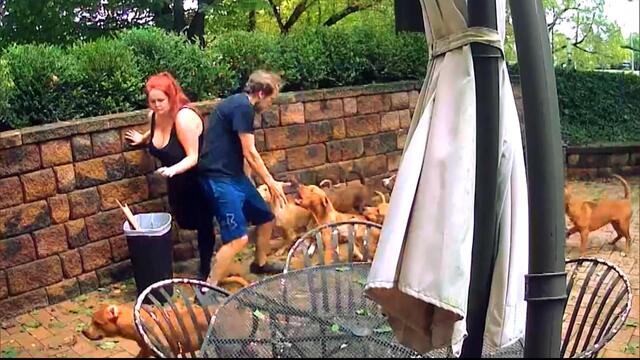[ad_1]
When Oakland rap star Kamaiyah sat down to be interviewed by San Francisco rapper and graffiti artist Dregs One on his “History of the Bay” podcast last month, she appeared instantly at ease. She’s generally camera-shy and private, but here, she was engaged and open — much more inclined to share details about her life.
Dregs One noted the contrast. He had watched a few interviews to prepare for their conversation, he said, and she appeared “standoffish” in some of them. Why the difference?
“It’s the energy,” Kamaiyah explained. She was responding positively to his naturally inquisitive approach and deep, intimate knowledge of Bay Area hip-hop culture — the result of living it his whole life.

This Saturday, Oct. 19, that energy and knowledge will yet again be the driving forces behind the second annual History of the Bay Day, a daylong celebration of Bay Area hip-hop at the Midway in the Dogpatch. Among the expected highlights: 102 JAMS DJ Chuy Gomez will join for a live podcast episode to talk about his 30-year career in radio, while Rappin 4-Tay will receive a lifetime achievement award.
The event, funded in part by a grant from San Francisco’s Dream Keeper Initiative, will also feature a graffiti gallery by Dying Breed SF; DJ sets by local legends like Mind Motion and DJ Juice; and a lineup of live performances by Kamaiyah, Souls of Mischief, Dru Down, DaBoii, a Mob Figaz tribute to the late rapper Jacka (a mentor of Harris), B-Legit. And, of course, there will be a set from the only living Bay Area rapper who could have pulled all those elements together: Dregs One.
A hip-hop ambassador
Dregs One, 37, is a city kid through and through: Born Reza Harris, he grew up in Lakeview, but spent a lot of time in the Mission as a high school participant in the DJ Project at Horizons Unlimited of San Francisco, which offers classes and mentorship to community members aged 12 to 26. There, he made friends with young adults from the Mission, Sunnydale, Potrero Hill and Hunters Point. He learned how to use studio equipment, make beats, rehearse and perform; he still uses Reason, the software he learned at Horizons, to produce music.
The experience also pointed him in the direction of working with inner city youth, which he did formally for many years, and still does with his artistic endeavors.
“Quite a large part of my audience are very young teenagers,” he says. His “History of the Bay” show has expanded that audience exponentially, in part because he’s just so prolific: He’s released a remarkable 82 episodes in the two years since he first added “podcast host” to his list of titles. The interview series has not only connected him with Bay Area kids of all ages who are eager to learn about what happened in their own region before them, he says, but to an increasingly international fanbase.
“I have toured Japan a couple times, the Philippines, been out in Europe,” he says. “Last time I was in Paris, I was walking around and people literally on the street were recognizing me.” It’s telling, he says, “just to be somewhere random in another part of the world and someone’s coming up to me, recognizing me because I’m talking about graffiti or [music]. In Paris, they’re super keyed into Bay Area rap.”
In Tokyo, he adds, Giants caps are the rage among rap fans.
“These people are collectors,” he says. “They don’t have the access like I had, of just being able to hop on the train and see the subway tunnels where it was a moving gallery [of graffiti]. They don’t have a record store you can go to and it’s all Bay Area music. You have to collect it, you have to be serious, you have to discover it. That’s part of the fun of the underground, too — the discovery process.”
‘You forget you’re learning’
Nastia Voynovskaya, KQED Arts & Culture’s associate editor, praises Harris’ natural leadership as a media personality and hip-hop educator. “Dregs has a special place in the hip-hop media landscape,” she says. At History of the Bay Day, Voynovskaya will moderate an all-women panel discussing the state of gender inclusivity in hip-hop with KMEL radio personality Shay Diddy, DJ Shellheart and Studio X owner, artist and engineer Xarina.
Dregs’ insider knowledge, note Voynovskaya, lends an intimacy to his interviews: On YouTube, you can watch him connect with subjects who don’t always give warm interviews to others.
“He didn’t just study hip-hop. He lived it,” says the journalist. “And his firsthand perspective on the culture makes him an excellent interviewer that gets unique insights out of artists and cultural figures. His content is so entertaining that you often forget you’re learning.”
With both the podcast and his events, Dregs One says he’s always thinking about the next generation — and he aims to be accessible, never condescending.
“A lot of times older people have a tendency to downplay the younger generation, they’re like, ‘Ah, they don’t know about this, they don’t care about this.’ But it’s not that, it’s the fact that they don’t have access to learn,” he says. “So I try to do the opposite, putting it out there and making it accessible for kids to learn from, and when you do that, they actually respond and they’re actually interested.”
“I’ve had people stop me on the street and tell me that,” he says. “They’ll say, ‘Man, I’m only 18 but I learned so much about my own city that I never even knew just from watching your stuff.’”
History of the Bay Day takes place from 2 – 8 p.m. on Saturday, Oct. 19 at The Midway (900 Marin Street). Tickets ($49.44 and up) and more info here.
[ad_2]
Source: missionlocal.org




